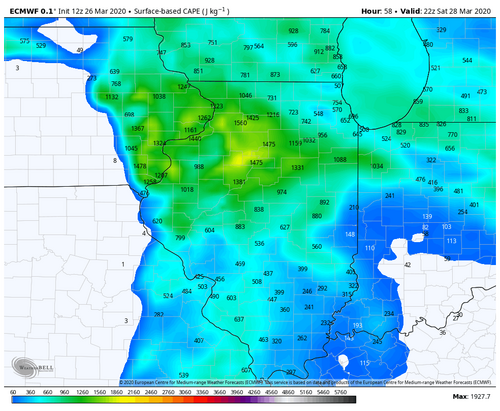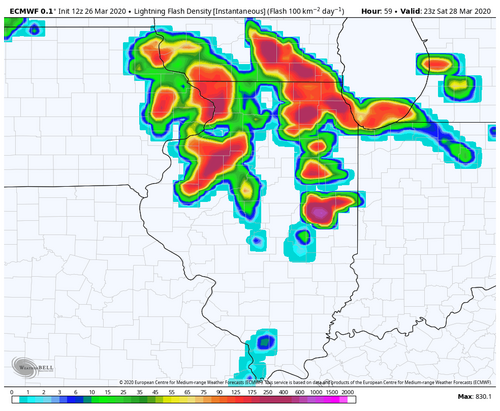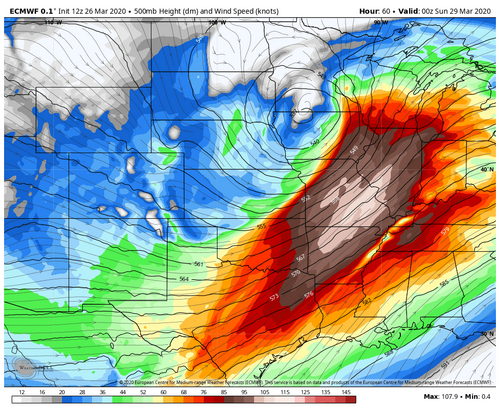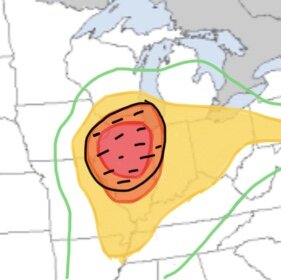Jesse Risley
Staff member
Though it's still a bit out in the extended time period, I've been keeping an eye on the trough that traverses across the middle CONUS and transitions out of its positive phase by FRI night - SAT morning.
A low pressure over SC KS is progged to deepen and move into NE IA or NW WI/far E MN, depending on whether you consult the ECMWF or the GFS, as the trough deepens that the mid-level jet core begins to approach the lower Missouri River valley by 12z/28. As of right now a warm frontal boundary is poised to be positioned somewhere between US 34 and US 20, extending eastward across IA and into IL. Shear profiles support the development of supercells, with seasonably ample lapse rates, MLCAPE values AOA 1000 J/KG and SRH profiles generally between 100-250 m2**s2 INVO of the warm front and closer to the triple point. The extent of instability in the archetypal warm sector is still yet-to-be-determined, though peeking at H85-H7 RH values and what products are available on the GFS, there may be a regionally narrow corridor of sufficient atmospheric instability, synchronous with what is also showing up on some of the ECMWF soundings, from EC IA into far E MO and C IL, for all modes of severe weather, particularly if storms do materialize and stay discrete. There are definitely favorable profiles in the lowest 1km on the 12z/25 ECMWF for rotating updrafts. Given that we are still 96+ hrs out storm mode and the extend of atmospheric instability in the warm sector remains to be determined, but this could be the first appreciable severe weather event for the central Corn Belt if things materialize properly.
A low pressure over SC KS is progged to deepen and move into NE IA or NW WI/far E MN, depending on whether you consult the ECMWF or the GFS, as the trough deepens that the mid-level jet core begins to approach the lower Missouri River valley by 12z/28. As of right now a warm frontal boundary is poised to be positioned somewhere between US 34 and US 20, extending eastward across IA and into IL. Shear profiles support the development of supercells, with seasonably ample lapse rates, MLCAPE values AOA 1000 J/KG and SRH profiles generally between 100-250 m2**s2 INVO of the warm front and closer to the triple point. The extent of instability in the archetypal warm sector is still yet-to-be-determined, though peeking at H85-H7 RH values and what products are available on the GFS, there may be a regionally narrow corridor of sufficient atmospheric instability, synchronous with what is also showing up on some of the ECMWF soundings, from EC IA into far E MO and C IL, for all modes of severe weather, particularly if storms do materialize and stay discrete. There are definitely favorable profiles in the lowest 1km on the 12z/25 ECMWF for rotating updrafts. Given that we are still 96+ hrs out storm mode and the extend of atmospheric instability in the warm sector remains to be determined, but this could be the first appreciable severe weather event for the central Corn Belt if things materialize properly.





